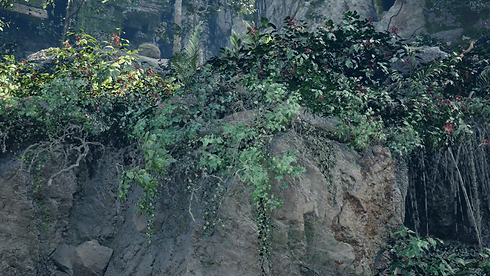
Basic color grading in Lightroom

Material property data

Highest rendering quality with anti-aliasing

High rendering quality without anti-aliasing

Scalability Settings: extremely high scalability

Scalability Settings: high scalability

Scalability Settings: medium scalability
Basic color grading in Lightroom

Lumen Scene

Scalability Settings: low scalability
Basic color grading in Lightroom

Unlit

Detail Lighting

Nanite Triangles

Ray Tracing Debug Triangles

Reflections

Nanite Lightmap UV

Wireframe
*All the images above were rendered from the ElectricDreamsEnv in UE5.2, with no camera settings and post processing, directly output from the Movie Render Queue, and include the Nvidia anti-aliasing plugin.
*The images above are based on the graphics system of UE5.2, and results may vary in other software. These images are provided solely as examples to demonstrate differences and their constructions.
*Only a selection of the settings that have a clear and noticeable impact on image quality and visual effects is used as an example.
The current research focuses on the main topic:
Digital Images and Their Materiality
The title of a research project is:
Technical Aesthetics and Visual Mediality:
A Media Archaeology of 3D and AI Computer-Generated Images
Abstract
The convergence of advanced 3D imaging and artificial intelligence has introduced new methods of image production that are reshaping contemporary visual culture. This study investigates how the technical systems underlying the production of 3D- and AI-generated images determine their aesthetic characteristics and ontological status as a medium, employing a media archaeology and new materialist framework. It further examines how these technology-driven aesthetics contribute to establishing 3D- and AI-generated imagery as an independent visual medium—beyond a mere subset of digital imaging—and the influence this emerging medium exerts on visual culture. Key areas of analysis include the interplay between users and image technologies and the roles of hardware, algorithms (including photorealistic rendering techniques), game engines, and cinematic techniques in image creation. Methodologically, the study conducts a media-historical and archaeological analysis of the computerization, graphical rendering, and mediatization of images. This approach delineates the specificities of 3D- and AI-generated images in contrast to related forms (such as traditional digital imaging, computer graphics, and synthetic images), clarifying the conditions of their aesthetic and ontological emergence. The research explores how functional requirements, invisible data structures and algorithms, hardware materiality, visual interfaces, and image reception practices converge into a unified, multi-dimensional structure for these images. By examining these components, the study addresses how data-driven visualizations in 3D- and AI-generated imagery blur the boundary between the visible and the invisible, altering conventional notions of representation and imagination. Ultimately, this research highlights how 3D- and AI-generated images, as a new form of visual medium, are reshaping contemporary visual paradigms and reconfiguring the relationship between human cognition and digital imagery, thereby offering critical insights into their aesthetics and media ontology within contemporary visual culture.
Keywords: 3D- and AI-Generated Images, Technical Aesthetics, Visual Mediality, Media Archaeology, Computational.